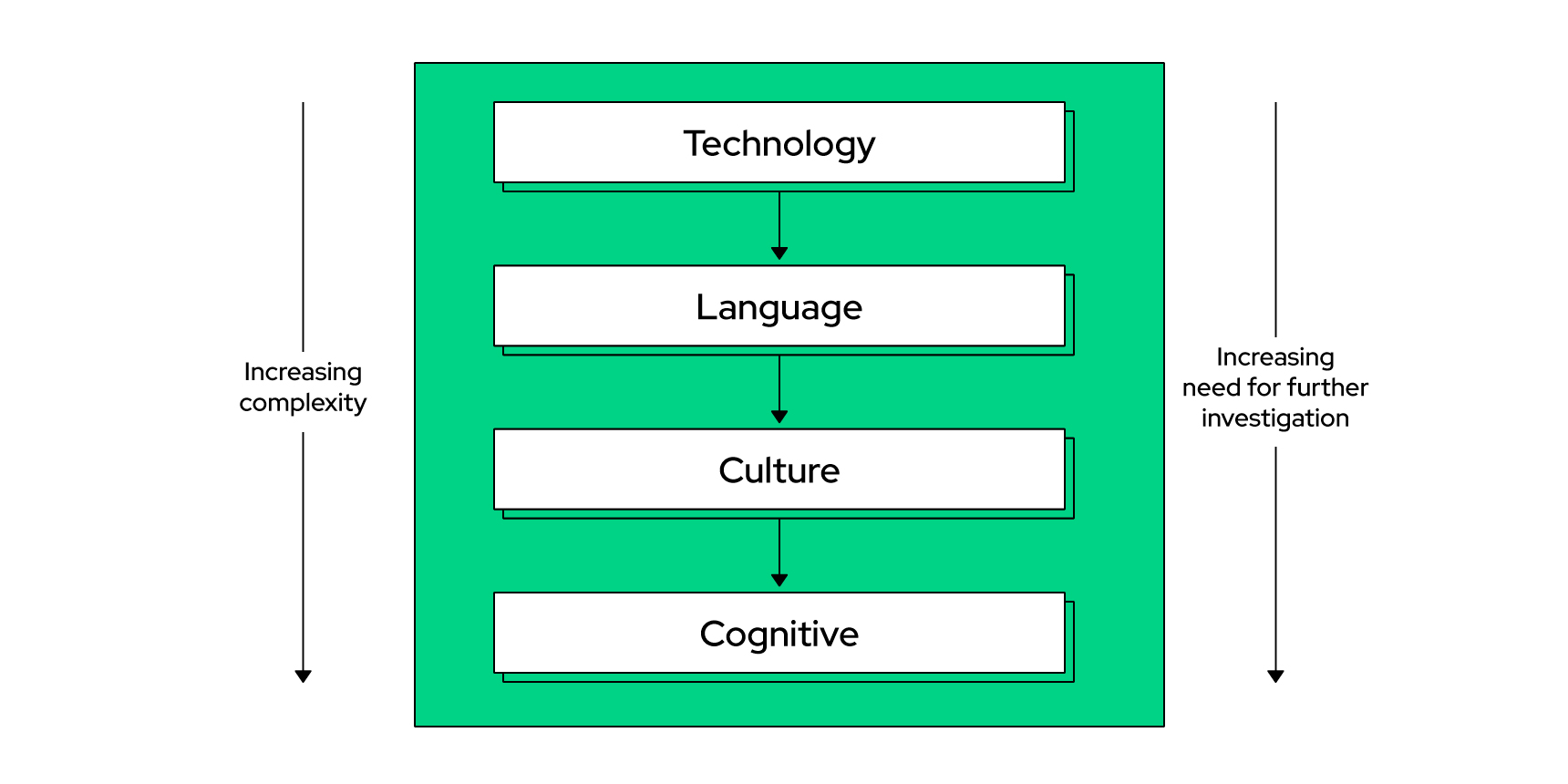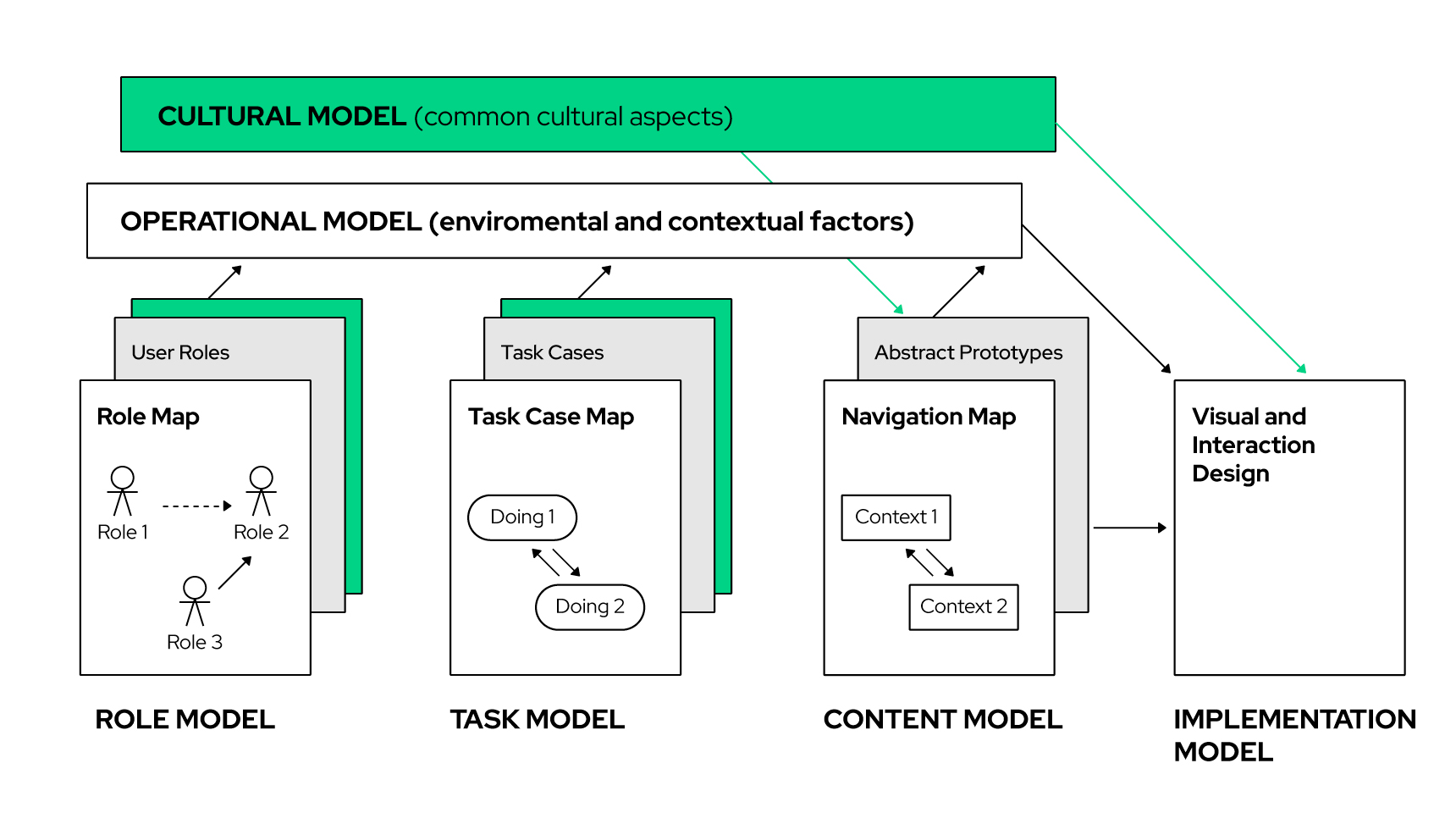We live in a world of cultural diversity. That doesn’t mean that we need to design always for all.
Adapting a product to a new culture requires time and effort. So, first we must ask ourselves: do we need this product? If we conclude that it is necessary, we must analyze the most appropriate and efficient way to do it for our particular case. Let’s dive into these questions!
Sometimes a product is targeted for particular users, from particular cultures. But some other times a product is intended to be shared by culturally diverse users.
So, what happens when users do not share the same culture? How does it affect the usability of the product?
Cultural adaptation occurs constantly and in a multitude of situations. Food is a clear example. All human beings need nourishment. However, each region will provide access to different foods and to diverse knowledge or traditions on how to prepare and eat them, including the context: schedules, places, people with whom the moment is shared, utensils that are used, ideologies, preferences, or customs, among others.
While it can be interesting and exciting to taste foods from other cultures (at least to me), on many occasions there will be people who prefer not to try certain foods or there will be foods that are simply incompatible with ideologies, customs, availability or tastes.
Following this example, and with the aim of reaching a greater number of users, any product can undergo variations in order to better adapt or connect to a specific culture, and to achieve greater compatibility and engagement.
So, in which cases should we bet on an intercultural design and in which cases is it convenient to target a very specific audience?
This decision will depend on what percentage of the product will be maintained and what percentage will need to be reworked. But, to understand this, we must first delve into the diversities we face.
Empathy is a key factor for successful Intercultural Design
Successful intercultural design needs to take into account different mentalities, problem-solving strategies, and thought patterns that are anchored in culture.
According to Rüdiger Heimgärtner in his book Empathy as Key Factor for Successful Intercultural HCI Design, that is why empathy is a key factor in the successful design of intercultural products. Empathy facilitates greater project success, better understanding, sustainability, and time-saving, as well as the removal of prejudice.
The very first step to empathizing is to discover the other person’s frame of reference and to understand what the other person can experience or feel. So, we depend on the ability to understand the web of beliefs of others.
That is a hard task, since it is not possible to meet another culture in a “neutral” way. We all carry our own cultural biases. For this reason, the ideal way to reach out to other cultures is by working with local research teams, which can collect the needs and requirements “from the inside”, without being biased, and being able to make the right questions and observations. If that is not an option (compatible with the available resources) we need to immerse ourselves as much as possible in that foreign culture.
So a good start is to understand that bias in order to build bridges between differences.
According to Meixner and Müller in their book Automotive User Interfaces: Creating Interactive Experiences in the Car, “Only by taking over the perspectives of the users, (…) designer can grasp their needs better and, this can lead to good user interfaces with higher usability and invoking excellent user experiences.”
How can we immerse ourselves in a foreign culture?
Of course, we can resort to the research tools that we normally use for any context or user. But it is important to take special consideration to cultural aspects.
Sometimes we can learn about intercultural variables only by observing at least two cultures and their differences. This can be useful to work with cultural models and generate empathy.
Cultural models describe the differences between cultures and make it possible to compare them with each other. They help to overcome this gap using cultural standards and dimensions to look beneath the water surface, to probe the unconscious areas of culture.
One of the best-known cultural models is the iceberg model of culture. Only some attributes of culture are visible and conscious (like language). Most of them are invisible and unconscious and, hence, difficult to investigate (like beliefs and values).
Once we have a better picture of the culture we want to reach, how can we proceed?
We are going to differentiate between two possible situations: We may need to adapt an existing product or the product may still be in the ideation stage.
Starting from an existing digital product: TLCC model
If we need to bring an existing product to new cultures, the TLCC model can be a great framework. It raises four levels of depth. Each level will lay the foundation for the next one.

1. Technical level
This level is the most basic and essential to go through an internationalization process. It refers to all the technical aspects of the product (technical infrastructure and technical standards). It requires adapting programming languages, character sets, and representation forms. Unicode is an example of a precondition to process Asian languages at the language level.
2. Linguistic level
At this level the interface will be translated and several related aspects will be modified (such as punctuation, vocabulary, grammar). This step is basic so that the user can understand and interact with the interface.
Most products stop at this level of internationalization (localization), without taking into account cultural differences in the way of interacting with information. Because language is an easily distinguishable attribute (it is above the surface according to the iceberg model), it is often wrongly believed that it is enough to translate a product so that it adapts to a different culture.
3. Cultural level
At this level, we would go from a localized product to a cross-cultural product, since the cultural and cognitive aspects are now being considered. Culture influences the interaction of the user with a digital product because of the way users move in a cultural surrounding. Therefore, culture has a direct influence on the interaction of the user with the system.
The cultural level covers two areas. One is the context of use and the other is the meaning of symbols, graphics, colors and metaphors.
4. Cognitive level
This level goes beyond the concrete meaning of the digital product. Here we consider the various cognitive styles, which give rise to different priorities, structures, styles of interaction, and so on. For example, the design of menu structures and feature priorities can be analyzed with simple card sorting methods, because different cognitive styles may need different information architectures.
This level is the most underestimated one, but has a big impact on the usability of a digital product.
Start from zero: Usage-centered approach
Ideally, intercultural design should already begin with the analysis of requirements before starting the design. This can save us a lot of time. According to a study by Mutschler & Reichert, a detailed analysis of product requirements can save up to 80% of maintenance and implementation costs of such requests for change.
If we know from the initial stage that the digital product to be designed will have to adapt to a diversity of cultures, the intercultural usage-centered (IU-CD) approach can be very useful.

IU-CD is an approach postulated by Constantine and Lockwood that has regained relevance in the context of intercultural design. It has a scalable approach due to its focus on user performance. It helps designers to get started, and helps create better localized and internationalized systems, thanks to its reusable models that make it possible to retain insights.
Thanks to this streamlined process driven by simple models, the users would be able to accomplish their tasks more accurately and reliably in less time.
IU-CD is based on three core models that represent the relation between users and system (Role model), the work to be accomplished by the users (Task model), and the contents and structure of the user interface (Content model).
To integrate the cultural aspects and the internationalization requirements is necessary to extend and adapt the existing process at different places.
The common aspects for intercultural UI design will be included in a cultural model. This would include all the “static” cultural influences (appearance, navigation, metaphors, mental models, interaction). The cultural model captures the common rules of the cultures for which the system will be designed. One cultural model is used for each culture.
Some other cultural influences are not static; they are system-specific. Those would need to be included in the Role model and Task model. For instance, one user role has different salient backgrounds in different countries and, therefore, requires different task structures in different countries.
Conclusions
This is not a one-size-fits-all case. There is no single way to implement an internationalization process.
The first step is to approach the foreign cultures with respect and empathy, to analyze and understand the gap between the cultures to be reached. Then, it will be possible to understand the various needs to be covered and how costly they can be for the product.
Depending on the development stage it is in (ideally, the sooner intercultural analyzes are included, the better) the decision can be made as to what level of internationalization our product requires:
Is a technical level enough? Can we move towards a linguistic level? Do we have the capacity to cover the cognitive and cultural levels? I hope this overview of options can help you make the best decision for your digital product.
